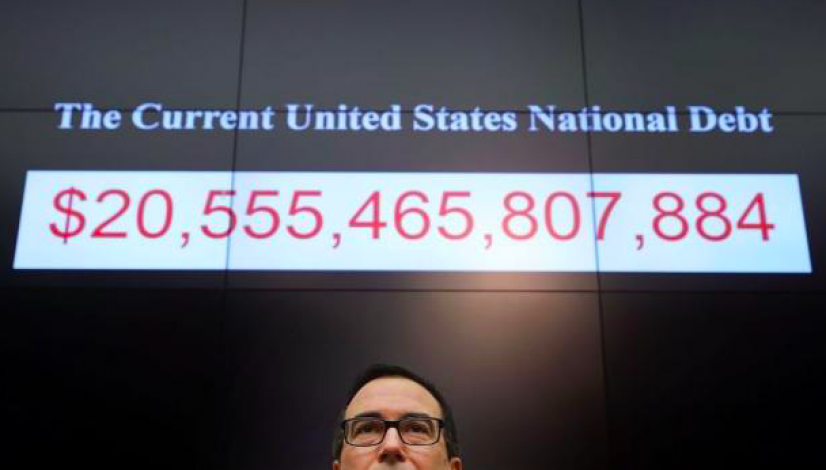Guns, butter, designer shoes: Senate budget deal feeds the swamp
Guns, butter and designer shoes! That’s what the Senate budget deal looks like — a spoiled fashionista’s shopping list. The old-fashioned notion of compromise appears to have disappeared in favor of a free-for-all giving everyone on both sides of the aisle pretty much everything they wanted.
Republicans got a huge (and needed) hike in the defense budget, while Democrats got a laundry list of goodies, including four more years of a children’s health insurance program on top of the six already guaranteed in the last spending bill. What was the point of that?
Democrats and the liberal media complained that the Republican tax cuts were excessively stimulative to an already expanding economy and amounted to pouring gasoline on a fire. They warned that higher rates and looming inflation would follow. Those concerns apparently disappeared under the blissful prospect of wanton check-writing and vote buying.
Politically, the impact of the proposed spending bill, which hikes outlays by $300 billion over two years, is mixed. Many Americans are tired of the incessant drama from our nation’s capital. They are also fed up with Congress not being able to do their job and pass a budget, instead lurching from one deadline to the next.
The Senate bill postpones for two years the need to revisit the debt ceiling, which is a welcome reprieve. That is the irritating moment when high-minded Republicans take the floor and object to paying for the spending their votes have already authorized.
But tranquility may be a high price to pay for Republicans who with this agreement cede their role as the prudent overseer of the nation’s purse. Some accused them of treachery in passing a bill that cuts taxes. Do not confuse higher federal spending with reduced revenues.
One leads to greater federal bloat and inefficiency, the other means returning to individuals and businesses their own money, which they will invest and spend more widely than government bureaucrats.
Here’s why the Senate proposal matters, to you, the reader, and to your friends and families: Higher spending, coupled with the tax cuts, will accelerate the already-accelerating economy.
One of Wall Street’s top economics teams has estimated the increased spending will result in 0.3-percent additional growth. That may not sound like much. But it is enough that immediately upon seeing the terms of the budget agreement, investors pushed yields on the 10-year Treasury up close to 2.9 percent, the highest since January 2014, and dumped stocks.
That’s because investors expect the Federal Reserve will move more aggressively to curtail inflation, by raising interest rates faster than they had previously forecast. When rates go up, the cost of mortgages, car loans and credit card debt, for instance, all become more expensive, causing consumers to cut back.
Also, higher rates mean that fixed income instruments like bonds become relatively more attractive compared to stocks. With interest rates at near-zero levels for the past several years, investors looking for decent returns had to buy stocks; nothing else provided meaningful returns. That is now changing.
There are two other worrisome aspects of the spending bill. One is the impact on the national debt, which today stands at a little more than $20 trillion. Rising budget deficits will add to that staggering total.
In fiscal 2017 (ending Sept. 30) the government spent $666 billion more than it took in; in this current year, that figure will likely increase, perhaps approaching $1 trillion. The Committee for a Responsible Federal Budget had predicted the budget deficit for fiscal 2019 would total $1.12 trillion; that was before this spending bill.
Why does the deficit matter? First, interest on our debt is going to eat up more of our budget with every tick up in interest rates. Under Obama, the nation’s debt soared from $11.9 trillion at the end of fiscal 2009 to roughly $20 trillion.
But the impact was all but invisible because interest rates were so low. Interest payments on all government debt (including some state issues) totaled $414 billion in 2010; that increased to only $433 billion in 2016, despite the leap in borrowings.
Today, rising rates will mean that the amount of money the government spends to service our debt will rise rapidly. For the first four months of the current fiscal year, the Congressional Budget Office estimates that interest outlays rose $13 billion, or 14 percent, because they predict higher interest rates.
If rates continue to increase, the debt service totals will quickly become one of our biggest budget items, backing out needed spending on items like infrastructure.
President Obama should have taken advantage of the extra-low rate environment created by years of monetary easing to lengthen the maturities of the nation’s debt portfolio, but he did not.
The move would have highlighted the jump in debt under his management, a revelation Democrats were eager to avoid. Instead, most of our borrowings continue to be in short-term securities, an irresponsible decision that leaves the country vulnerable to rising rates. Thank you, Obama.
President Trump was elected promising to drain the swamp. He and members of the administration have been criticized for trying to cut spending at the Environmental Protection Agency, the State Department and other agencies.
But our legislators are not on board; they want to fatten the swamp creatures. That is how it has always been and for the moment, it appears the White House is not strong enough to resist.

Published on The Hill




